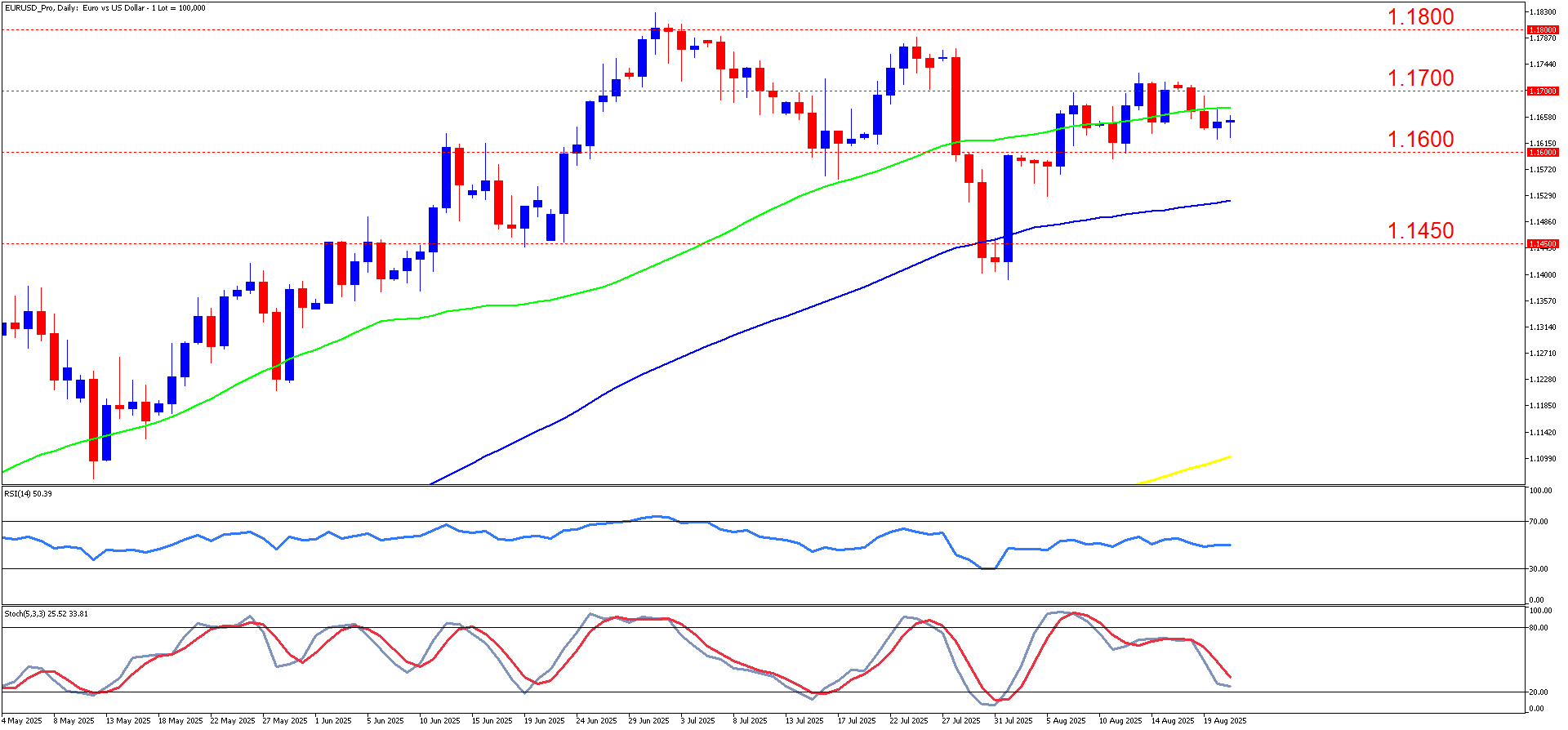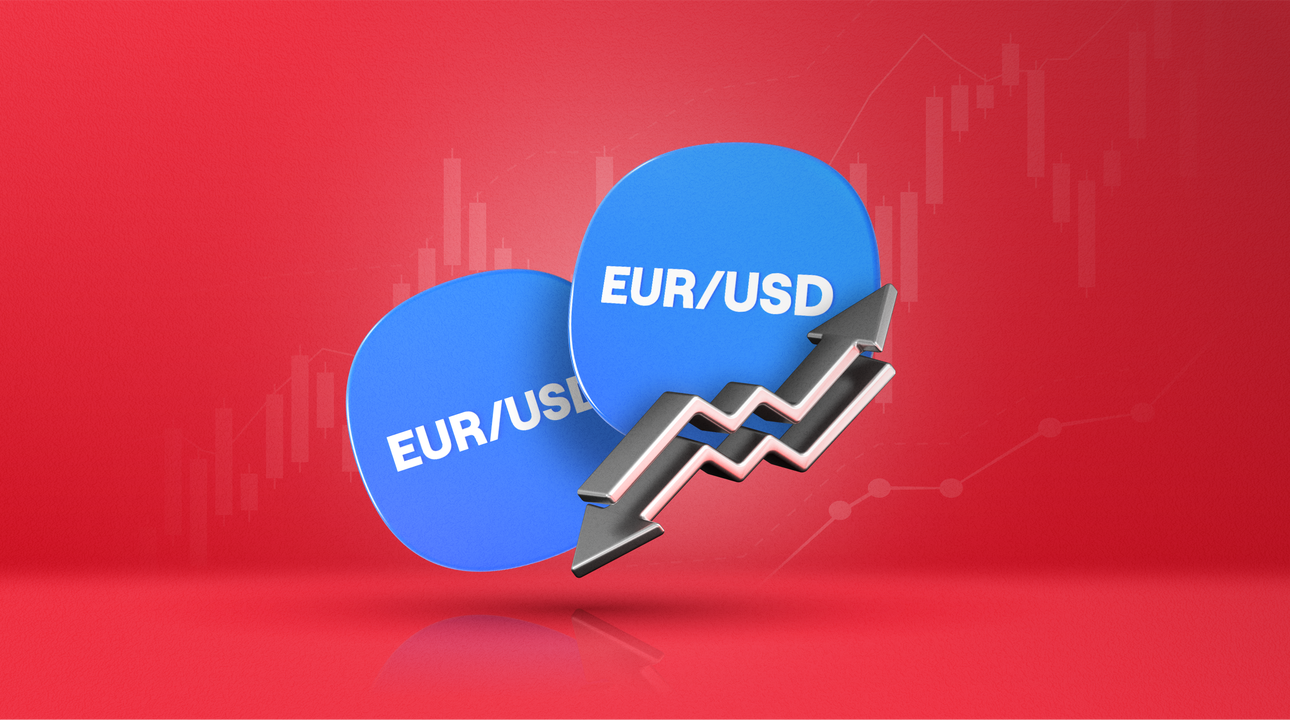
Past performance is not indicative of future results. All historical data, including but not limited to returns, volatility, and other performance metrics, should not be construed as a guarantee of future performance.
EURUSD on a Daily timeframe
EURUSD on the daily timeframe shows that price action in May through early July was characterized by a strong bullish rally, pushing the pair from below 1.1400 up toward 1.1800. This uptrend established higher highs and higher lows while remaining above the 50-day moving average, showing solid momentum. However, after reaching the 1.1800 resistance area, the pair began to stall, with successive attempts to break higher failing and producing a sequence of lower highs since mid-July.
In the most recent sessions, EURUSD has been consolidating between 1.1700 and 1.1600, with choppy candlesticks suggesting indecision. Buyers attempted to hold the pair above 1.1700 but failed to sustain the breakout, and price has now drifted back closer to 1.1600 support. The candles show shorter bodies with wicks on both ends, reflecting a balance between buyers and sellers in this consolidation phase.
Technical indicators provide mixed but telling signals. The RSI is sitting around 50, confirming the lack of clear directional momentum at present. The stochastic oscillator, however, is in the oversold zone near 25, suggesting bearish pressure has been dominant lately but is nearing exhaustion. The green moving average (short-term) has flattened, showing the slowdown in upward momentum, while the blue longer-term moving average is still trending upward, indicating that the broader uptrend structure has not yet been invalidated. Key support rests at 1.1600, with further downside potential toward 1.1450, while resistance levels stand at 1.1700 and 1.1800.
The primary scenario is that EURUSD continues to consolidate above 1.1600 before attempting another upward move. If buyers regain strength, the pair could retest 1.1700, and a successful breakout there would open the door to 1.1800 once again. Given the longer-term moving average trend, the underlying bias remains mildly bullish unless 1.1600 breaks decisively.
The alternative scenario is a bearish breakdown below 1.1600. If sellers manage to push through this support, momentum could accelerate toward the 1.1450 area, which aligns with the rising longer-term moving average. Such a move would shift sentiment more decisively bearish and signal that the July top at 1.1800 was a medium-term high.
From a fundamental perspective, in the past few days, the euro has been sensitive to European inflation readings, which showed signs of cooling, potentially reinforcing expectations that the European Central Bank will maintain a cautious stance. On the U.S. side, recent Federal Reserve commentary and stronger-than-expected labor data supported the dollar, adding pressure on EURUSD. Looking ahead this week, traders will closely watch Eurozone PMI releases and U.S. housing market data, as well as Fed Chair Powell’s upcoming speech for guidance on monetary policy. These events could provide the volatility needed for EURUSD to break out of its current range.
SUMMARY:
- Rally Paused: EUR/USD jumped from 1.1400 to 1.1800 in May–July, but momentum stalled mid-July.
- Sideways Action: The pair now trades between 1.1600 support and 1.1700–1.1800 resistance, showing indecision.
- Mixed Signals: RSI sits at 50, Stochastic near oversold, short-term MA flat, long-term MA still bullish.
- What’s Next: Staying above 1.1600 points to a retest of 1.1700–1.1800; a break below 1.1600 could drive a drop to 1.1450.


